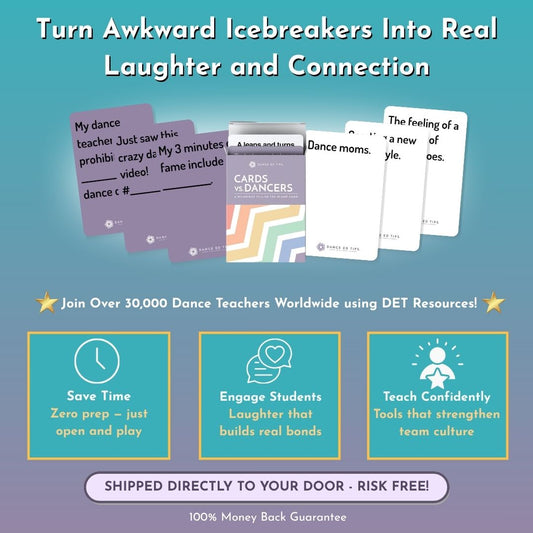By: Danielle Weitman
Articulate movements, control, flexibility, strength and artistry all encompass the beauty of dance. Behind each carefully crafted movement lies a series of muscles working vigorously to support the dancer performing them. Just like any athlete, a dancer’s muscles serve purpose to stabilize, stretch and jump, but are instructors properly training their students to understand the working muscles within this art form?
The new generation of dance flaunts tricks and flexibility that continues to reach a younger age bracket, oftentimes accompanied with injury and improper use of muscles. The importance of understanding how to correctly execute movements rather than just mimicking what is seen is something I preach in my classes. Training your students to not only visually see the muscles working, but to build a better mind to muscle connection while dancing will not only prevent injury but will also allow them to become more in tune with the way their bodies are designed to move.
So how can we as dance instructors implement this concept into our classes?
Visually, dancers can look at a movement and duplicate what they see, but internalizing it and actually feeling the working muscles makes a stronger, more aware dancer. Incorporating a variety of strength exercises will allow students to feel their muscles and understand how properly to engage them.
A few exercises that I implement in my classes that has helped my dancers improve their strength and muscle connection are:
1) Progressing the dancers into a slow controlled forward lunge with their arms above their head, press into the front knee by shifting the weight into the heel. This will in turn activate their hamstrings on the supporting leg to then allow them to lengthen to a penche’ position. I will have the dancers alternate sides traveling the movement across the floor. This exercise helps the dancers understand how to transfer their weight in addition to feeling the sensation of muscular contraction into a lengthening of the muscle.




2) Have the dancers stand with one leg extended on the barre in devant, reach the hands around their shin and use their Lattisimus Dorsi muscles to bring the leg up and off the barre into a devant leg extension. Oftentimes when dancers bring their leg up into an extension, they pull with their arms causing flexion of the spine. I have my dancers retract their scapula (pull the shoulder blades back) to feel the lats engage and continue to lift the leg by pressing down through their back and squeezing their gluteal muscles on the supporting side.




3) Another simple exercise I will have the dancers perform is pressing into a deep second position grande plié and squeezing their adductors closing into a tight sous sous. It is a simple yet effective movement pathway to train dancers to activate their adductors and this will support their jumps and extensions.





4) Have your dancers lie on their backs and draw up their leg to a passé position. Many times you will notice the dancers low back lifting off the floor (anterior pelvic tilt) this is due to a lack of engagement through the low abdominals, tight hamstrings or tight hip flexors. One of the crucial cues I give my dancers is to tuck their pelvis and engage their abdominal wall while dancing. In order to have the dancers feel the sensation of tucking their pelvis- have them come into a plank position. Small tucks of the pelvis while holding the plank will enable dancers to stand tall without arching their low back. Have the dancers perform this for 20 repetitions to feel their abdominals engage.

Stating what muscles that are causing the movement, stabilizing the shape or traveling through space will give the dancer an opportunity to feel more connected to both choreography and their musculature. Teaching your students how to connect more appropriately to their working muscles will give them an opportunity to better understand their strengths and weaknesses and will also make them all around more technical dancers.

Danielle Weitman has studied dance for the last 23 years, attending competition studios, The American Repertory Ballet School and Mason Gross School of the Arts for Dance where she received her Bachelor of Fine Arts degree in the Spring of 2013. While at Mason Gross, Danielle was exposed to a variety of studies including; Dance for Children, Laban-notation, Alexander Technique as well as Kinesiology for Dancers. She has also had the privilege of working with various choreographers ranging from; Randy James, Stefanie Batten Bland, Roxanne Lyst, Sherry Alban, Kimani Fowlin, Stuart Loungway, Douglas Martin, Niles Ford and Kathleen Flynn Gavin.
Danielle has since taken on the art of bodybuilding competing in various shows with OCB, WBFF and NPC federations. In addition to bodybuilding Danielle is a personal trainer and fitness instructor at OVOX Gym in Morganville, NJ. She teaches a variety of specialty classes and trains a variety of clients ranging from college athletes to stay at home Moms. She is also been a dance instructor at East Coast Dance Company located in Sea Girt, NJ. At ECDC she teaches a variety of disciplines such as; Jumps and Turns Technique, Ballet, Jazz, Pointe, Lyrical and Modern. The combination of studies from dance and fitness have allowed her to incorporate an extensive knowledge of connecting the body and mind within all of her occupations. Her goal is to teach both dancers and her clients to be the best that they can be without any self-criticism.





